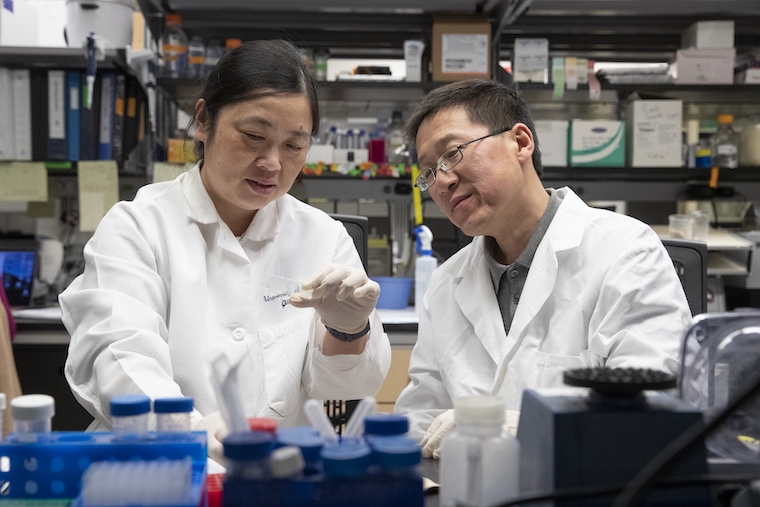Our Hui Zong, PhD, has been studying a form of cancer that is both simple and very uncommon. His latest discovery will show you why.
Professor Zong researches the childhood cancer, called medulloblastoma, not only because it’s terrible for any child to have brain cancer but because medulloblastoma’s simplicity lets him delve deeply into the cancer’s inner network. That sort of research can provide important insights into not just medulloblastoma but other forms of cancer.
His latest discovery does just that. He and his team found that this supposedly simple cancer wasn’t so simple. It forms an unexpectedly intricate network to drive its growth, and some tumor cells actually turn into another type of cell altogether.
He believes this network creation is actually common in many types of cancers. That gives researchers new targets as they develop new treatments.
“I would think this is going to happen in all kinds of cancer types,” Professor Zong said. “Just like the formation of a new organ, cancer is formed by a collection of cell types that mutually support and reciprocally regulate each other. So network formation should be the norm rather than the exception.”
Here’s how he did it: Professor Zong and his team used an innovative model of the cancer to mark tumor cells so that they appear green, while leaving other cell types outside the tumor colorless.
Strangely, they found, a cell type called astrocyte also turned green.
“Astrocyte actually has been linked to poor prognosis of medulloblastoma, but nobody has ever suspected its origin since the cell of origin for medulloblastoma normally never gives rise to astrocytes,” Professor Zong explained. “The fact that tumor-associated astrocytes share the same color with tumor cells suggests that they actually come from tumor cells. So some tumor cells basically completely change their identity to make a separate cell type.”
The astrocytes, the researchers found, hijack immune cells called microglia to benefit the tumor. They coerce the microglia to produce a substance vital for tumor proliferation, IGF1.
So, long story short, a small number of tumor cells transform themselves into another cell type, which coerces a third cell type to fuel the tumor growth.
This process is “super important for tumor progression,” Professor Zong said.
The good news is that this intricate network exposes medulloblastoma to many potential interventions. Our Ying Jiang (left) and Hui Zong have determined that a supposedly simple cancer, called medulloblastoma, forms an unexpectedly intricate network to drive its growth.
“I’m hopeful that, with a carefully designed method, we can not only reduce production of IGF1 from microglia but also activate them into tumor-attacking mode,” he said. “Once activated, microglia could even recruit [immune cells called] T cells and B cells into the tumor to fight off the malignancy together.”
